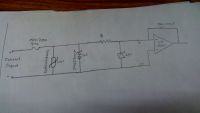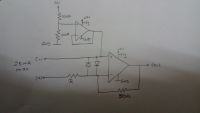hemnath
Advanced Member level 3
I am working on a transimpedance amplifier current to voltage convertion where the input current is 25mA(max). I want to add some protection on the input side. Should I use Littlefuse PTC resettable fuses? If accidentally, the terminals are applied to 230V AC, the fuse should protect the circuit.
I have selected the Littlefuse part no: 250S130DR. Is that right? Please share your knowledge. Thank you.
I have selected the Littlefuse part no: 250S130DR. Is that right? Please share your knowledge. Thank you.

